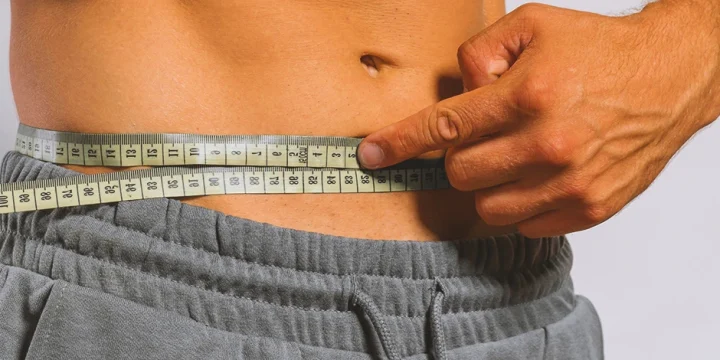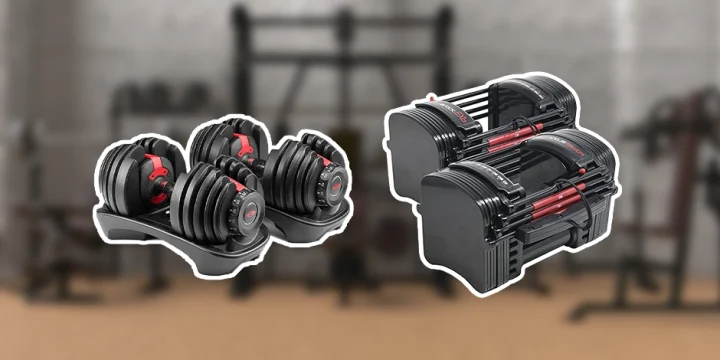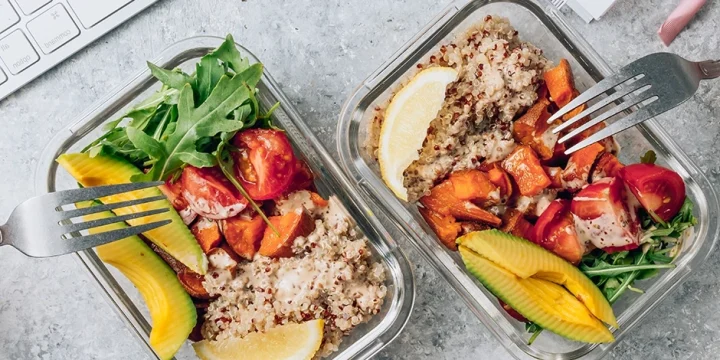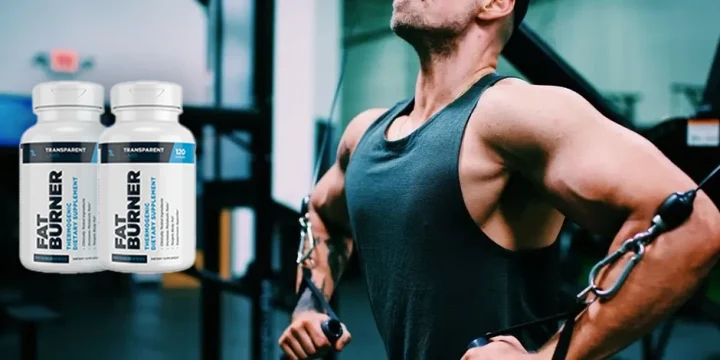The cutting phase is a logical follow-up to the bulking process, representing two sides of the same coin in bodybuilding.
Cutting can become difficult if we don’t follow basic principles such as caloric deficit and choose the wrong training methods to support our cutting process.
Based on my experience and 25 hours of extensive research, I created a guide on programming your workouts to support your cutting phase.
Both cardio and lifting aspects are included to create a complete program that aims to holistically develop your body and lower the risk of potential cardiovascular side effects.
Quick Summary
- To implement a cutting plan adequately, you must include cardio and weight-lifting aspects to gain or maintain muscle mass, burn fat, and avoid negative side effects.
- The cardio aspect consists of high-intensity interval training and steady-state cardio, which should be implemented in a cutting workout to lose body fat and support burning calories.
- The International Journal of Environmental Research and Public Health defines hypertrophy-specific training as a workout method that employs predetermined exercises, intensity levels, and rest intervals to maximize muscle growth
- In my opinion, prioritizing sleep quality and muscle retention through weightlifting is crucial for successful cutting and achieving a caloric deficit.
What Is the Best Workout to Get Cut?

The best workout to get cut combines high-intensity interval training, circuit training, or a regular weightlifting program.
As an experienced, fitness trainer, I recommend steady-state cardio mainly to maintain your cardiorespiratory health, mixing it up to prevent your body from getting too used to it, as suggested by Frontiers in Cardiovascular Medicine research [1].
On the contrary, weight training is the most effective way to lose body fat since your body will burn more energy and resources to maintain the tonus of your muscles while at rest.
You must also implement a cutting diet with the right proportion of macronutrients to support weight and fat loss.
"If you don’t measure it, you can’t manage it. So stop guessing how much you’re eating and track it using a macro-friendly nutrition app."
- Emmie Satrazemis, Certified Specialist in Sports Dietetics
Cutting Workout Example

- Back: Chin-ups (2 sets of 8-12 reps), Bent-Over barbell rows (1 set of 8-12 reps) and Barbell shrugs (1 set of 8-12 reps)
- Legs: Squats (2 sets of 8-12 reps) and Stiff-legged deadlifts (2 sets of 8-12 reps)
- Chest: Incline bench press (2 sets of 8-12 reps) and Dips (1 set of 8-12 reps)
- Arms: Dumbbell curls (2 sets of 8-12 reps) and Skull crushers (2 sets of 8-12 reps)
- Shoulders: Shoulder press (2 sets of 8-12 reps) and Rear deltoid raises (1 set of 8-12 reps)
- Calves: Calf raises (2 sets of 8-12 reps)
- Abdominals: V-ups (2 sets of 8-12 reps) and Side bends (1 set of 8-12 reps)
This is an example of Day 1 weight training, so you can add two sessions of 30-minute cardio.
The rest of the weightlifting sessions in the week follow the same logic but change the exercises, intensity, rest intervals, and similar.
Cardio Aspect

Option 1: High-Intensity Interval Training (HIIT)
High-intensity interval training, or HIIT, uses working and rest intervals for numerous sets to complete a single exercise over time.
For instance, you may run for 20 seconds, rest for 40 seconds, and repeat for ten sets or 10 minutes in total.
The work-to-rest ratio is 20–40, and the total duration of the exercise is 10 minutes.
This is just an example of fat burning HIIT workout, and below we will dive deep into each programming component so you get the most out of the HIIT training.
Frequency
The frequency of HIIT sessions will depend on your experience and the type of HIIT training.
However, you shouldn’t exceed more than 4 HIIT sessions weekly since an intense weight-lifting and cutting workout will not be as effective since your body won’t recover.
My general recommendation is to start with 1 HIIT session per week and get to a maximum of 2 HIIT sessions per week.
Timing/Duration

How long your HIIT training should last depends on your fitness level, but some general guidelines are to stick between 4 and 15 minutes.
If you are a complete beginner to the HIIT method, start at the four-minute session and work up to 10 minutes.
If you have previously done this type of training, you may start with a 10-minute session and work your way up to the 15-minute duration.
Changing the Exercise
Here are some exercises you may start with for your HIIT sessions:
- High-knees
- Cycling
- Jumping Jacks
These three would be an easier option and are recommended for beginners due to their low impact on knee and ankle joints and fewer energy requirements.
However, your body will adapt and need more “advanced” exercises to burn more energy.
This is where running, burpees, and battle ropes come into play.
Alternating exercises are crucial since your body will adapt quickly to workouts and spend less energy completing them.
Option 2: Low-Intensity Long Duration Cardio

Low-intensity cardio should be a part of the cutting workout plan, but only to support your cardiac and respiratory functions.
Cardio exercises for weight loss are all performed so your body utilizes oxygen (O2) the most to synthesize ATP (adenosine triphosphate).
You shouldn’t enter the anaerobic state or begin anaerobic processes during cardio exercises.
Anaerobic processes include the utilization of glycogen or creatine-phosphate to form ATP.
Frequency
I recommend sticking with two thirty-minute low-cardio sessions per week.
More than that will force your body to optimize the muscle-to-body-weight ratio, meaning you may start to lose muscle, which we want to avoid.
You may use the treadmill, run outside, use the elliptical, or even jump rope if you can stay aerobic during the whole exercise.
Pick an activity you can perform for 30 minutes using one rhythm without changing your frequency.
Duration
I recommend sticking to the thirty-minute sessions for steady-state cardio.
However, if you can’t perform an activity for thirty minutes, you may start at the 20-minute mark before progressing to the next bigger one.
Remember that low-intensity cardio is maintaining your cardiorespiratory health and not lowering your body fat percentage.
Intensity

Imagine running with your buddy for thirty minutes, and you must speak quietly with him during the whole exercise.
This is the intensity you should pick for your cardio sessions.
Pick the intensity at which you can talk with your “imaginary buddy” for the whole exercise duration.
Trust me, this will be low at first since it isn’t easy to both perform an activity and talk simultaneously, but that is the intensity you should pick in the beginning.
Changing the Exercise
Constantly switch the exercises to avoid the state where your body has adapted and spends little energy to complete the activity.
You may choose from the following exercises and change them periodically:
- Running
- Swimming
- Cycling
- Jump rope
Those are some basic ones, but you can pick any activity you can perform for an extended period.
Also, you can alternate exercises on a weekly basis to avoid quick adaptations and force the body to use more energy.
"Traditional cardio sucks for fat loss: it doesn’t burn enough calories and the more cardio you do, the better your body becomes at it."
- Anthony J. Yeung, Certified Strength & Conditioning Specialist
Pros and Cons of Each Type of Cardio

Here are the pros and cons of each type of cardio.
Pros: High-Intensity Interval Training
- Burns much more calories compared to steady-state cardio
- Last for less than 15 minutes
- Uses both aerobic and anaerobic energy sources to form ATP
Cons: High-Intensity Interval Training
- Not so beginner-friendly
- Hard on joints regarding certain activities and exercise choices
Pros: Low-Intensity, Low-Duration Cardio
- Maintains normal functioning of the cardiorespiratory system
- Low-entry, meaning anyone can perform it
- Associated with longer life and less chance of cardiac diseases
Cons: Low-Intensity, Low-Duration Cardio
- Your body quickly adapts to it and spends less energy
- Not the most efficient way to burn calories
- It may reduce muscle mass if you perform it too much
Weight Lifting Aspect

Now, let's talk about the key parts of cutting workouts: the right weightlifting program, exercise choices, and methods.
Weightlifting, great for muscle growth and maintenance, boosts energy use, aiding in the daily caloric deficit.
Also, don't skimp on sleep; it's crucial for keeping muscle, losing fat, and balancing hormones. Remember, our muscles use a lot of energy even at rest, keeping us toned and warm.
Let’s review some weightlifting aspects before transitioning to concrete methods and programming.
Focus On Large Muscles
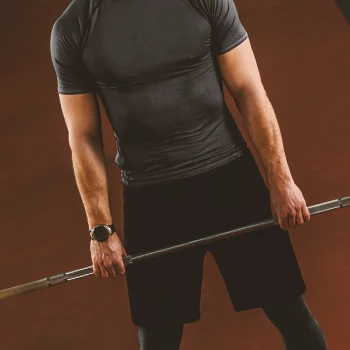
Focus On Compound Exercises
Compound exercises use multiple muscle groups and joints to complete a movement.
These should represent the core of your workout plan.
Some essential compound exercises include the following:
- Bench press
- Squat
- Deadlift
- Rows
- Pull-ups
- Overhead press
- Lunges
The only rule you should follow to implement compound exercises into your workout is to place them at the beginning.
This is because compound exercises require much more energy and tax your central nervous system (CNS).
Option 1: Circuit Training

The first method of weightlifting training is circuit training.
Circuit training means performing different exercises one after the other with defined rest intervals in between and specific amounts of sets.
I've often recommended circuit training to my clients, especially those who are short on time but still want an effective, full-body workout.
Let’s cover some circuit training programming essentials below.
The Exercises
You can program different exercises into circuit training to achieve your cutting goals.
Follow a couple of rules, and one of the most important ones is the order of the exercises.
The following exercises are divided and based on two principles:
- Push-Pull-Legs
- Compound exercises first, isolation exercises second
Here are examples of exercises and logical order to follow based on the two principles above:
- Dumbbell bench press
- Pull-ups
- Single-leg dumbbell deadlifts
- Rope tricep extension
- Calf raises
- Bicep curls
However, this isn't the full circuit since we must implement it between the below-mentioned exercises.
In-Between Exercises
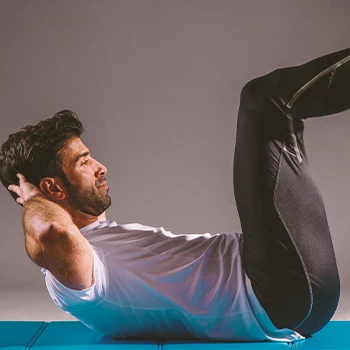
In-between exercises are usually less demanding, and low-resistance exercises are placed between compound or isolation exercises.
Most commonly, they are core exercises, and we pick them based on the following patterns:
- Ab Flexion - ab crunch, leg raises, jackknifes.
- Ab Anti-flexion/Extension - dead bug, hollow body holds, front planks.
- Ab Lateral Flexion - standing side bend with weight, lying side bend to touch feet.
- Ab Lateral Anti-flexion - side planks and farmer carry.
- Trunk Rotation - all variations of resistance band rotation and medicine ball rotational throws.
- Trunk Anti-rotation - pallof press, resistance band hold with elbows fully extended, overhead resistance band hold, etc.
These six primary patterns are used to define the exercises we will select.
For example, we can put ab flexion, ab anti-flexion, and ab lateral flexion exercises between the first or last three exercises in our cutting workout.
In the following workout, we may use the other three exercise patterns.
If you are a beginner, put these core exercises at the end of the circuit since you want the most energy for the first three big compound exercises.
Number of Circuits
You should initially stick to 2-4 circuits and progress to more when you adapt and become more experienced.
If you are a beginner, start with two circuits, and if you are an advanced lifter, you may start with 3 or 4 circuits.
The number of circuits is important since they are responsible for burning more energy, meaning you will achieve the caloric deficit easier.
Number of Repetitions

The number of repetitions for each exercise will vary, but here are some general guidelines to follow:
- Compound Exercises - stay in the range of 6–8 repetitions since these are more demanding, and you will use more external resistance.
- In between Exercises - these exercises should be done for more than 12 reps, and if they are time-based, like planks, you may start at 25 seconds and add five additional seconds weekly.
- Isolation Exercises - these are usually performed with lower resistance, and my general recommendation is to stick between 8 and 12 reps.
Intensity
There are three types of intensity: low, moderate, and vigorous.
However, we have a slightly different approach when discussing external resistance.
You should stay between 60 and 87.5% of the 1 repetition maximum (RM) for all exercises in the circuit.
Depending on the 1RM percentage, repetitions will naturally shift up or down.
Frequency
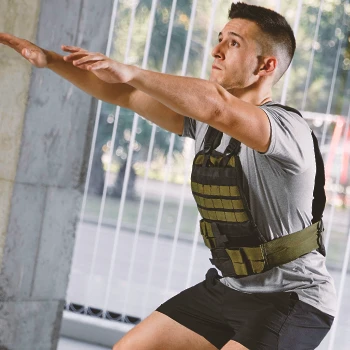
The frequency is determined by the number of circuit training sessions per week.
Stay in the range of 2–4 circuit sessions weekly.
Changing the Exercises
You should change exercises every week.
For example, you are doing a flat barbell bench press in the first week, an incline dumbbell bench press in the second week, and in the third week, you are doing weighted push-ups.
This will ensure your body never hits a plateau.
Option 2: Hypertrophy-Specific Training or HST Workout

According to the International Journal of Environmental Research and Public Health, the hypertrophy-specific workout is the type of workout that uses predetermined exercises, intensity, and rest intervals to ensure maximal muscle growth [2].
The main difference between hypertrophy and circuit training is the method.
In hypertrophy training, you perform a single exercise for a predetermined number of sets before proceeding to the next one.
Consider a couple of things before starting hypertrophy training.
Exercises
Use both compound and isolation exercises in the hypertrophy workout.
However, aim to place compound exercises such as bench presses, squats, and deadlifts earlier, while keeping your tricep/bicep curls, calf raises, and leg machine extensions for later.
Sets
The number of sets should be between 4 and 6 to ensure maximal muscle growth.
Stick to 4 if you are a beginner and up to 6 if you are an advanced lifter.
Repetitions

The number of reps should fall into the 6-12 rep range.
This amount of reps has scientifically proven to induce the biggest muscle growth when not performed until failure.
Rest in Between Sets and Duration
For the best hypertrophy effect, the rest between the sets should not exceed 90 seconds.
Rest for as little as possible, but repeat the same effort.
Frequency
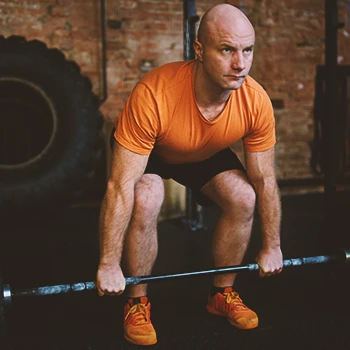
The number of hypertrophy sessions should be between 2-8 weekly.
Stick to 2 sessions if you are a beginner, 4 for moderately experienced, and up to 8 if you are advanced.
Changing up the Exercises
To evoke constant adaptation, you must periodically change the exercises.
Ensure that each exercise hits the same or at least a similar muscle group and follows the same movement pattern.
"In the world of fitness, especially bodybuilding and strength training, the term cutting refers to losing weight while retaining as much muscle mass as possible."
- Kirsten Yovino, Certified Personal Trainer
Pros & Cons of Circuit Training and HST

Here are the pros and cons of both training methods
Pros - Circuit Training
- Burns significant amount of calories
- Improves cardiovascular endurance and muscular endurance
- Makes your body harder to adapt
Cons - Circuit Training
- Can’t be loaded with a significant amount of weights
- It isn’t the best option for muscle growth
Pros - Hypertrophy-Specific Training
- Build the most significant amount of muscles
- Excellent for building strength too
- It doesn’t require cardiorespiratory fitness compared to the circuit training
Cons - Hypertrophy-Specific Training
- It doesn’t develop cardiorespiratory functions
- Doesn’t come into consideration if you seek to preserve muscle mass
FAQs
What Is a Good Workout Routine for Cutting?
A good workout routine for cutting is combined cardio and weightlifting. This will support weight and body fat loss, increase muscle mass and keep your cardiorespiratory functions.
Is 3 Months Enough to Get Ripped?
It depends on your diet, workout plan, and supplementation if 3 months is enough to get ripped. Most cutting workout programs can create significant results over three months if proper methods and diet are implemented.
Should I Lift Heavy When Cutting?
Yes, you should lift heavy when cutting. Lifting submaximal loads without going to failure will produce an anabolic effect and promote fat loss, one of the primary goals of an effective cutting workout plan.
References:
- https://www.ncbi.nlm.nih.gov/pmc/articles/PMC6172294/
- https://www.ncbi.nlm.nih.gov/pmc/articles/PMC6950543/
About The Author
You May Also Like


